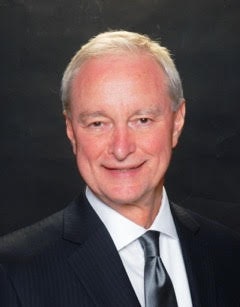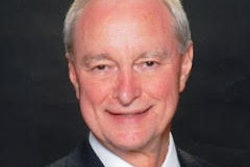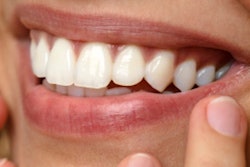
I recently had the opportunity to connect via Zoom with Sam Low, DDS, an associate faculty member of the Pankey Institute for more than 25 years and professor emeritus at the University of Florida's College of Dentistry.
 Sam Low, DDS.
Sam Low, DDS.Dr. Low and I have discussed the world of dentistry at multiple trade shows and dental meetings. With many of his lectures focusing on the periodontal aspect of dentistry, I thought now would be a great time to talk with him about the current state of dental hygiene as dentistry has shifted in the days since the introduction of COVID-19 into our society.
Q: Dr. Low, when we saw each other in New York at the Greater New York Dental Meeting toward the end of 2019, we discussed the benefits of the Epic Hygiene laser from Biolase (check out the video). That included the reduction of aerosols. How has all of this impacted the role of dental hygiene in the wake of COVID-19?
A: None of us could predict the whole aerosol game then. I'm not even sure I could even spell aerosol in March. Now I dream about it, unfortunately. Safety is one of the most critical issues that we're going through right now. I would also like to suggest that dental offices, we believe, are some of the safest healthcare areas that exist, but our patients and their perceptions can be different.
So, we saw the dilemma and the pain point for our dental hygienists out there. We saw this exact same thing occur with both dentists and hygienists during the HIV crisis in the early 1990s.
There are two primary aerosol delivery devices out there. One is the high-speed handpiece from the dentist and the other is the ultrasonic scaler from the dental hygienists. We have already been able to determine that the Waterlase dental laser creates 98% less aerosol than traditional handpieces. Well, if we take the ultrasonic out of the hygienists' hands, and we put manual instrumentation in their hands, I truly believe that is going backward, but we had no other choice in order to reduce aerosol production.
Q: And you believe dentistry is going backward in other ways as well?
A: Yes. Not only is the hygienist now going back to the manual instruments, but many are not feeling comfortable about managing the biofilms. And on top of that, you know about the ergonomics and the carpal tunnel syndrome, and these hygienists are just exhausted at the end of the day. They are trying to hold an evacuator. They are trying to use manual instrumentation. They're wearing an N95 mask where it's hard to breathe. They're wearing three layers of clothing, so the temperature is an issue for them. They're just exhausted.
Q: So what about the dental laser?
A: What we have found, and what we've known, is that a dental laser, such as the Epic Hygiene, in the hands of a dental hygienist, doing laser bacterial reduction and, to a certain degree, curettage, is very effective at biofilm removal. That's especially with the 980 wavelength. I am reluctant to get into wavelengths, but the only wavelength that is cleared by the U.S. Food and Drug Administration (FDA) for laser bacterial reduction is a 980.
We're giving the dental hygienist more confidence that, yes, you may be using manual instrumentation; however, if you use laser bacterial reduction in addition to the manual instrumentation, you will feel more confident in reducing the bacteria, which is causing the inflammation in the coronal pocket. That is literally the direction that we're taking and it's resonating well with dental hygienists out there. It's giving the dental hygienist an alternative where he or she can't use ultrasonics or feel comfortable using ultrasonics.
Q: So that's the hygienist. What's the message to the dentist?
A: The message to the dentist is, if you really want to start thinking about safety in the hygiene operation, then you want to either utilize the laser you have or consider acquiring a laser and then marketing it. I also believe it will decrease the amount of chair time for patients because of laser bacteria reduction.
Q: Is the future bright for hygiene and the hygienist's role in the bottom line of the business?
A: I think dental hygiene is a phenomenal profession. If my daughter or granddaughter said she wanted to go into dental hygiene knowing where I think it is going to go, I would be ecstatic.
The future is bright for the dental hygiene profession. The dental hygienist of the past may have been a cleaner. The dental hygienist of the future is the nurse practitioner. Their role, I do believe, will just cascade.
Q: I have to ask you, a periodontist, about the recent study from the Journal of Periodontology demonstrating that the Repair Perio protocol from Biolase is more effective for treating periodontitis than conventional procedures, with shorter times and less bruising, swelling, and postoperative bleeding.
A: We have been on pins and needles waiting for what is considered to be the most landmark study ever done, comparing the flap periodontal surgery versus Repair Perio. The study found that the Repair Perio protocol had shorter procedure times than open flap procedures, as well as less bruising, swelling, and postoperative bleeding, demonstrating that Repair is as effective as open flap procedures in clinical parameters, such as pocket depth and attachment level, but with significantly better patient-reported outcomes.
The six periodontists in the study are very well-known periodontists. It was published in the No. 1 referred journal in the U.S. and the mothership of the American Academy of Periodontology. We needed this because every time we talk to a periodontist, they always say, "Well, where's the study? Where are the studies?" Now we have it. We designed it to be the ideal study, and we are incredibly pleased with the results.
Will it sell lasers? I don't know. Is it what we needed for validity? Absolutely.
Note: If you're a hygienist and would like to participate in a short 10-question survey, DrBicuspid.com would welcome your feedback and opinions.
The comments and observations expressed herein do not necessarily reflect the opinions of DrBicuspid.com, nor should they be construed as an endorsement or admonishment of any particular idea, vendor, or organization.



















